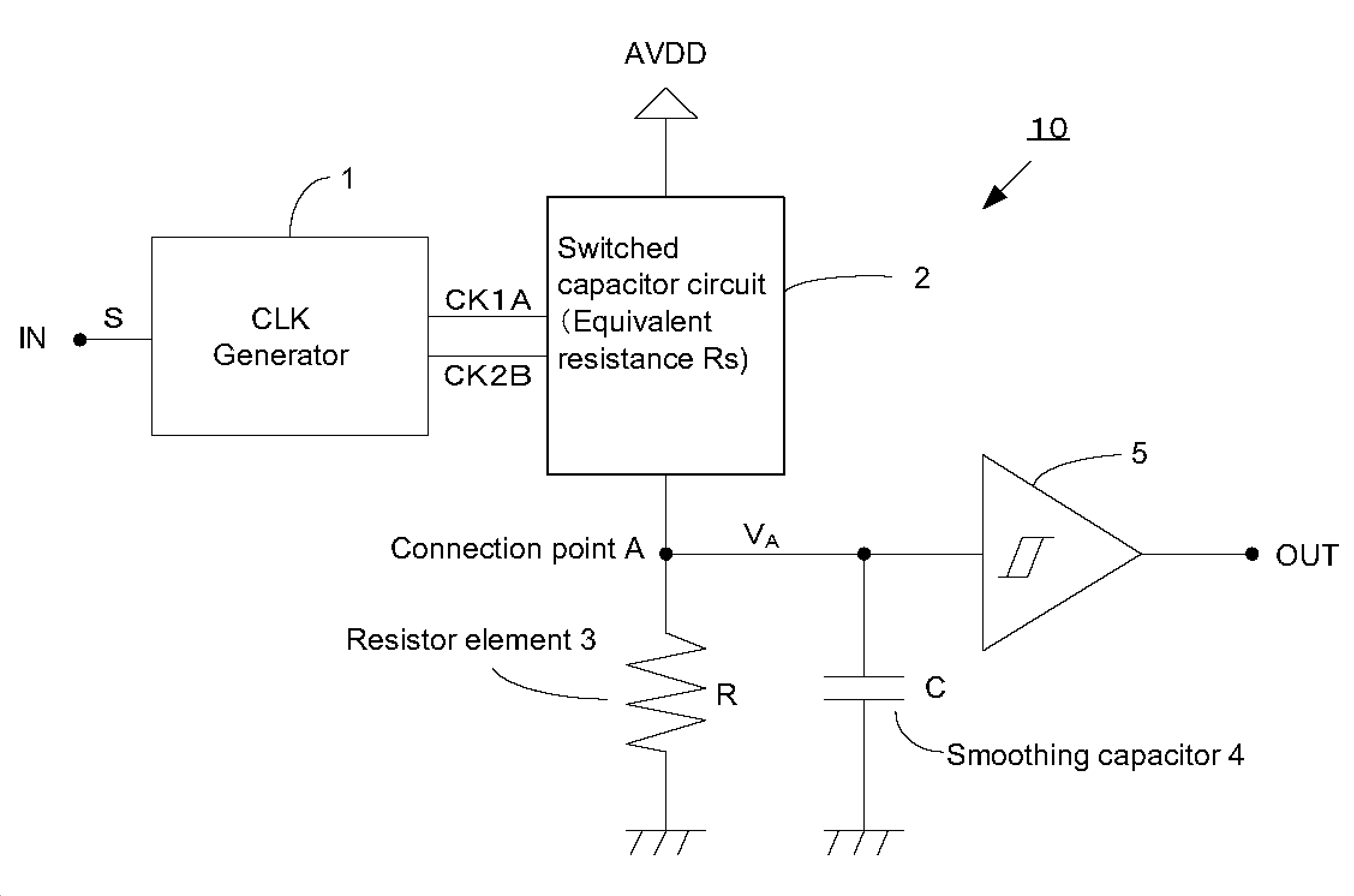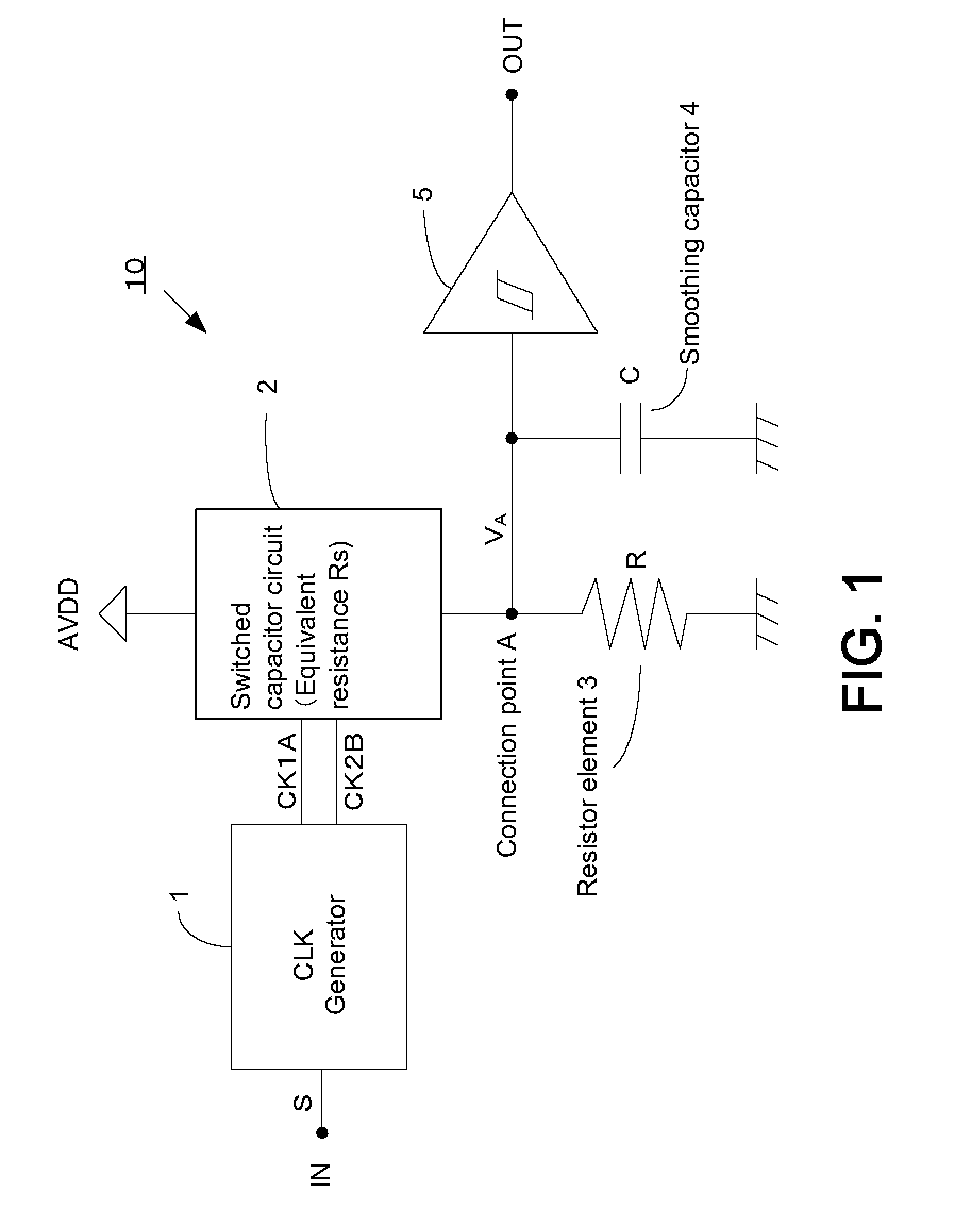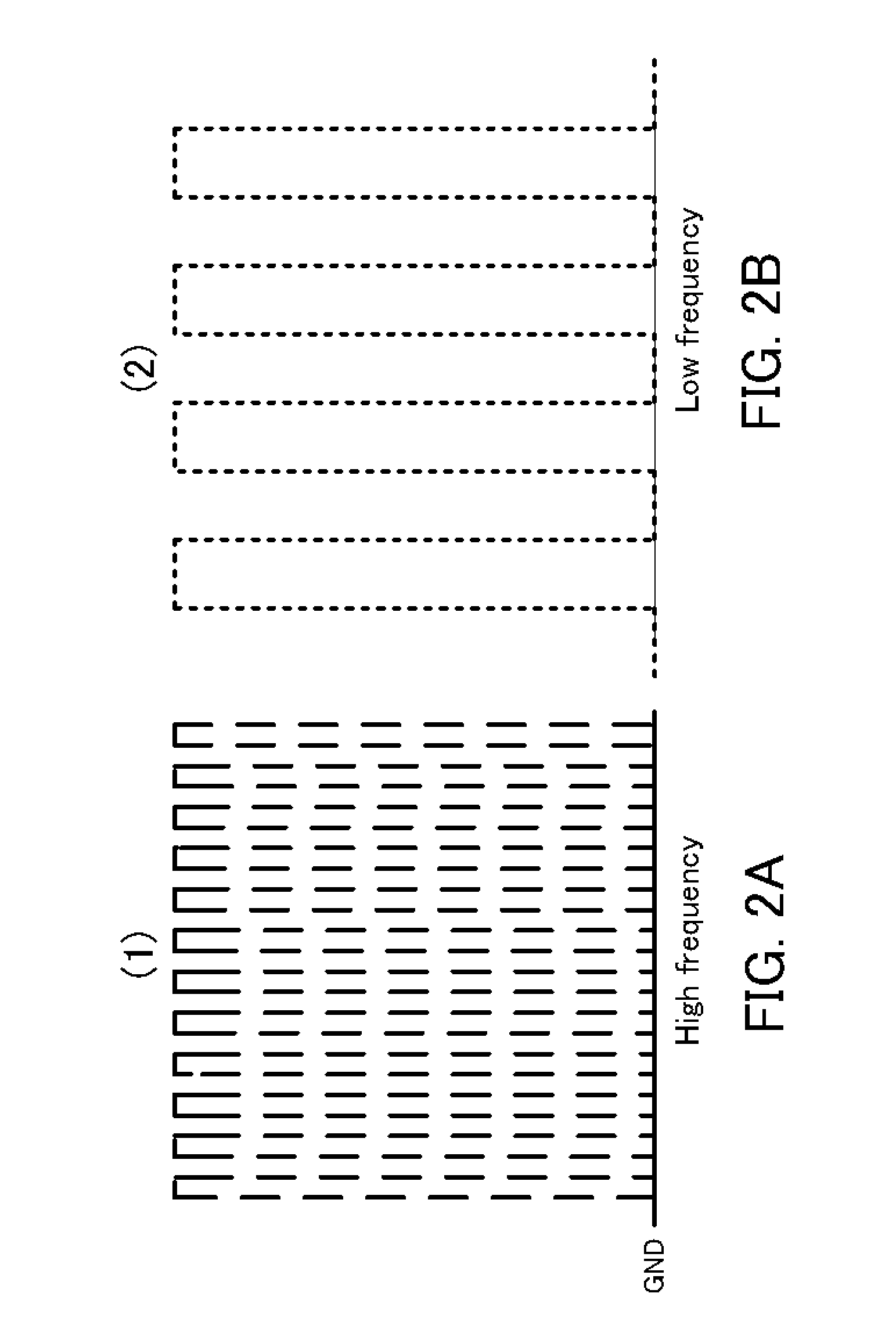Frequency detection circuit
a frequency detection and circuit technology, applied in the field of frequency detection circuits, can solve the problems of large electric power consumption, large circuit structure, and large siz
- Summary
- Abstract
- Description
- Claims
- Application Information
AI Technical Summary
Benefits of technology
Problems solved by technology
Method used
Image
Examples
Embodiment Construction
[0049]In the following paragraphs, some preferred embodiments of the invention will be described by way of example and not limitation. It should be understood based on this disclosure that various other modifications can be made by those in the art based on these illustrated embodiments.
[0050]Hereinafter, an embodiment of the present invention will be explained with reference to the attached drawings.
[0051]FIG. 1 shows a schematic block diagram of a frequency detection circuit 10 according to an embodiment of the present invention. This frequency detection circuit 10 is comprised of a clock generator 1, a switched capacitor circuit 2, a resistor element 3, a capacitor 4, and a Schmitt circuit 5. It should be noted that the present invention is not limited to this embodiment and that the embodiment can be arbitrarily modified within the scope of the present invention.
[0052]One end of the switched capacitor circuit 2 is connected to a power supply terminal and a power supply voltage A...
PUM
 Login to View More
Login to View More Abstract
Description
Claims
Application Information
 Login to View More
Login to View More - R&D
- Intellectual Property
- Life Sciences
- Materials
- Tech Scout
- Unparalleled Data Quality
- Higher Quality Content
- 60% Fewer Hallucinations
Browse by: Latest US Patents, China's latest patents, Technical Efficacy Thesaurus, Application Domain, Technology Topic, Popular Technical Reports.
© 2025 PatSnap. All rights reserved.Legal|Privacy policy|Modern Slavery Act Transparency Statement|Sitemap|About US| Contact US: help@patsnap.com



